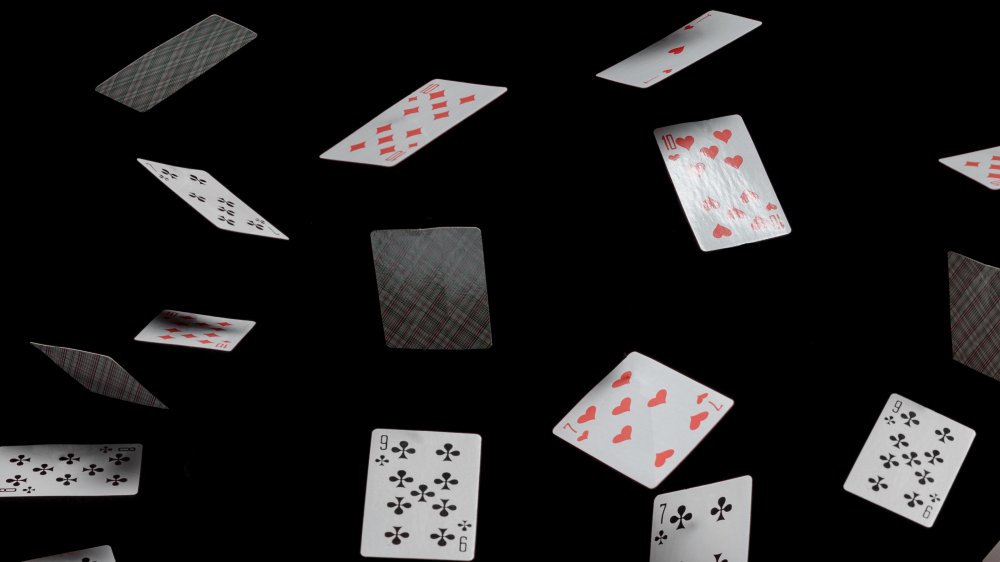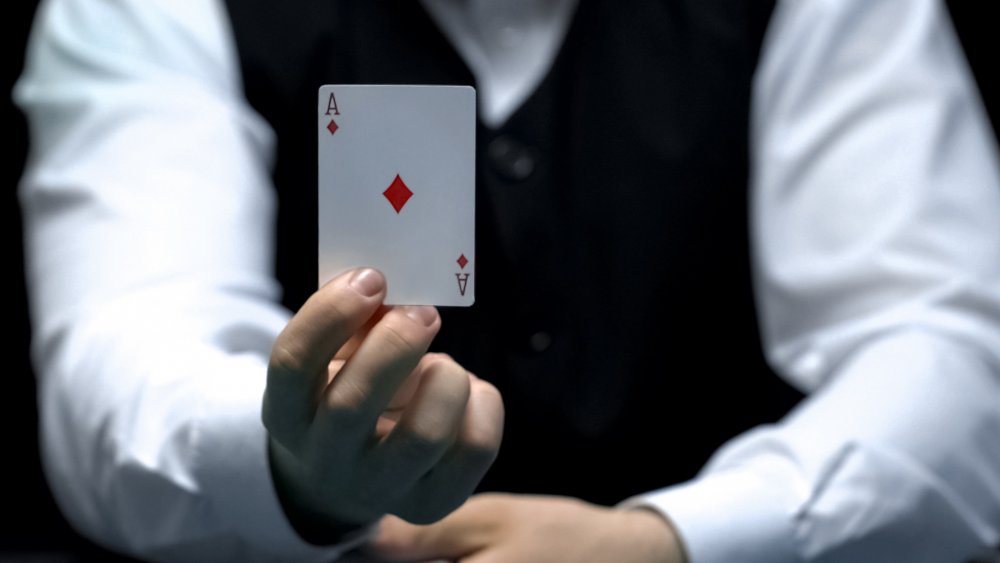The Mysterious Origin Of Playing Cards
Pick a card, any card. No, not that one. Yes, that's a good one. Now don't say what it is. Don't show it, either. Just think about it. And was it — the Seven of Clubs! No? Hmm. Let's try again. Pick a card....
Playing cards — 52 cards divided into four suits, numbered 2-10, three royalty, an ace — hearken back to a long ago time, when amusements were simpler and performed by hand — like playing solitaire — or perhaps riverboat gamblers plying their trade, or street hustlers fleecing the tourists with something as simple as Three-Card Monte, as How Stuff Works explains (and Harry Anderson demonstrates). We have nicknames for the individual cards and for card combinations; aces and eights is a dead man's hand, since that's supposed to be what Wild Bill Hickok was holding when he was killed, but a new favorite has to be a Princess Leia, a hand which includes two aces, a two, and a three, because AA23 is the cell where she's held in Star Wars IV: A New Hope, per Mental Floss. (A queen and a jack is a Maverick, quoting the theme song of the old TV Western starring James Garner.)
Cards have provided entertainment for centuries
Illusionist Ricky Jay used to throw playing cards as part of his act, sticking them into watermelons, and wrote a book titled Cards as Weapons in 1977, says The New Yorker. (His thrown cards were clocked at 90 miles an hour.)
And while you might never figure out where the queen went in a Monte game, did you ever wonder where the queen came from? Or the other 51 cards in the deck? (Don't include jokers. Please.) Did they just magically appear one day in Buckingham Palace (we'd have sworn there was nothing up that guy's sleeve)?
Not quite, though that's an interesting thought and it would have been fun to hear Queen Victoria finally admit she was amused. But there's no exactitude, either, which is the only point upon which scholars seem to agree — that, and a vague reference to Asia. As The Atlantic points out, "the birthplace of ordinary playing cards is shrouded in obscurity and conjecture, but — like gunpowder or tea or porcelain — they almost certainly have Eastern origins." The UK's History of Playing Cards posits that they got their start in China, and moved from there to India, then Persia, then Egypt, finally popping up in Paris in the mid-1300s.
Is this your card?
There's a record of a card game being busted in Shandong, China, in the late 1200s, reports Atlas Obscura. No matter which theory is invoked, they all seem to agree: the documentation is as scarce as a royal flush. The oldest complete deck of cards is called the Cloisters Deck, which has less to do with monks or nuns amusing themselves in their cells (the Bicycle Playing Card company says there are more than 150 versions of the game) and more to do with where they're stored: the Cloisters location of New York's Metropolitan Museum of Art. The deck dates back to the late 1400s, says Atlas Obscura.
There are lots of variations in playing card designs. The Guardian tells of German decks divided into acords, leaves, hearts, and bells. The rise of printing technology meant that playing cards could be produced quickly and cheaply, making it even easier to put your money down. It's rude to count it while you're still at the table. Providing you have any left.
So let's try this one more time. Pick a card....


